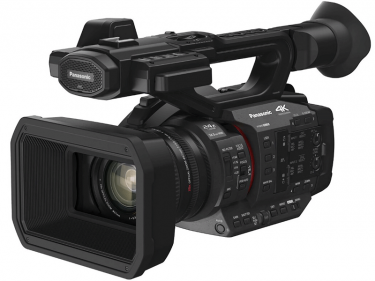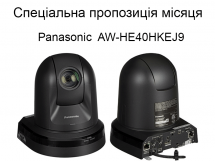| Українська | English | |||||||||||
|
|||||||||||
| News | About company | Service-centre | OB Van/SNG Rental | NextGen Energy Solutions | Contact us |
|
|
Engineering Service, Inc.
» News News Panasonic unveiled two new versatile 4K 60p camcorders at IBC2022. The HC-X2 and HC-X20, designed for professional broadcast and video creation.
It’s been a while since ENG crews routinely lugged around 3-chip broadcast cameras, and while some of us might miss the sheer joy of a 20:1 mechanical zoom, the ability to throw the entire camera package in a carry-on and stroll through airports not being followed by a wagon train of Pelican cases is more than compensation enough. Panasonic has just announced a new pair of cameras to address exactly that market, expanding its HC series with the HC-X2 and HC-X20. In common with previous models, shorter numbers mean more features – it’s the same platform, but the X2 adds HLG and V-Log plus some new networked capabilities. The cameras appear to be a succession to something like the HC-X2000, announced in early 2020, which lacked any mention of those more advanced brightness handling systems, though the imaging capability is somewhat similar. The company’s term for the sensor is “1.0-type,” hinting at the fact that you’ll struggle to find a one-inch measurement anywhere near the sensor. Most likely, it’s an active area a shade less than 16mm on the diagonal, from the old vacuum tube nomenclature. Whether or not 4K on a sensor that size sounds like fun in a one-operator, handheld documentary camera, the new cameras add face-detection autofocus, controlled from the touchscreen. The 4-lens drive system and five-axis optical stabilisation from the X2000 series is retained, which is probably a good idea given the long, 20:1 zoom (there’s that number again). There are three mechanical rings for proper controllability, though inevitably it’s at least somewhat electronically-actuated and the performance of servo lenses is a somewhat interpretive matter. The X2000, at least, was a good example of the breed. While the X20 lacks the HLG and V-Log options, one of the bigger updates to these cameras is the improved picture control. Both have a variety of brightness handling options, but perhaps more importantly what we might call a vector correction or matrix-related colour processing feature. These are, after all, broadcast cameras, and especially given the option to live stream them it’s appropriate that they have at least the ability to be matched against other, different devices. It’s a feature that might once have been overlooked as lacking relevance to most people, although with the explosion in popularity of live streaming over 2020 and 2021, and the ever-increasing production value of online video, it’s no bad thing. The HC-X1500 (with its removable handle) and X2000 were designed to be very small and very light. The latter weighed in at only a kilo and a half, not even three and a half pounds, which might make the comparison with the X2 and X20 slightly less direct; Panasonic doesn’t seem to have published a weight, but describes the cameras as being “weight-balanced,” so they may not be quite so featherweight as their predecessors, if we want to consider the four-digit models their predecessors. Panasonic noted that X2 and X20 will be cost-friendly. In general, these cameras are likely to be bought by the armload by Panasonic-loyal broadcasters with a need for ultra-lightweight newsgathering, as well as people shooting industrials and documentaries, and, based on the available information, they’re likely to do it all quite nicely. « To the list of news |
|
|||||||||||||||||
 |
+38 (044) 593-18-20 +38 (073) 593-18-20 +38 (096) 532-96-82 +38 (095) 532-96-82 Service center Telegram @Engineer_Service |

|
|
|||||
 |
e-mail: engineer-service.tv 15 Vavylovykh str., Kiev, 04060, Ukraine Authorized service centre of Panasonic, Sony, JVC, Fujinon, Canon |
|||||||







